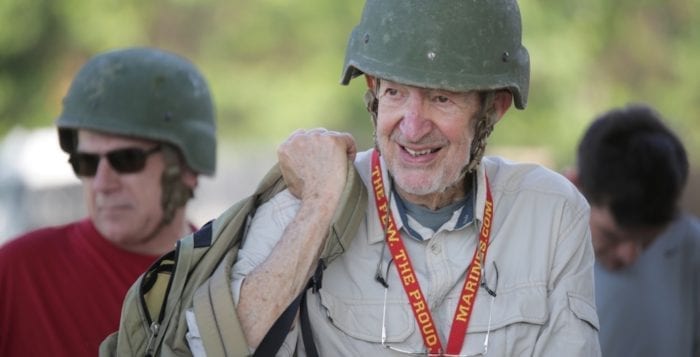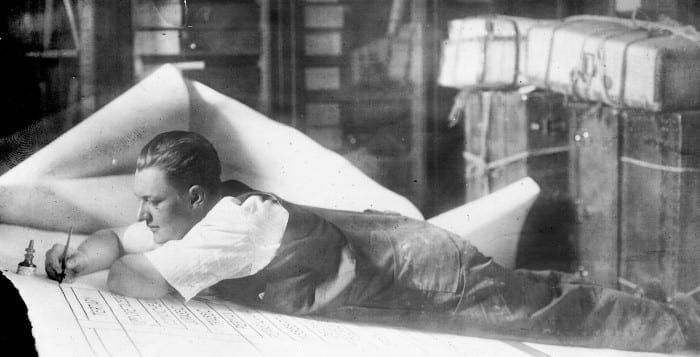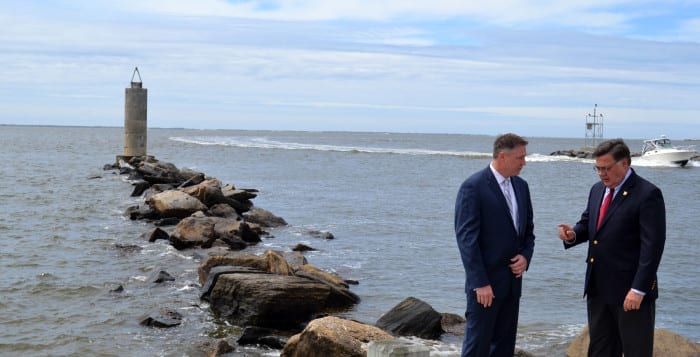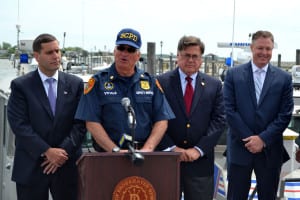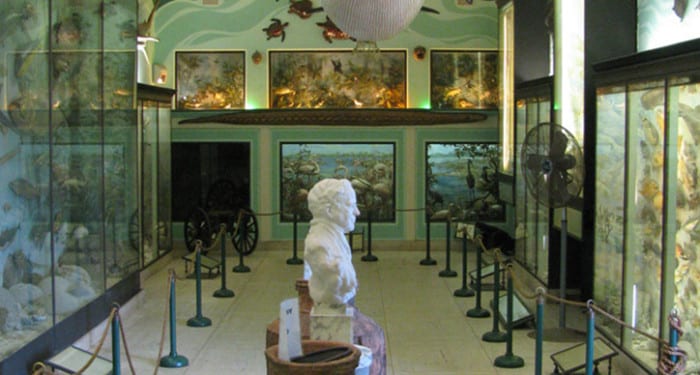As told to Cathy DeAngelo, vice president of sales and marketing, Jefferson’s Ferry.
Les Paldy is not your average 84-year-old. The Jefferson’s Ferry resident and distinguished service professor emeritus at Stony Brook University has spent more than 50 years teaching in the departments of technology and society, physics, political science and the university’s Honors College. While Paldy has retired, teaching only one class each semester and living with his wife Judy, a retired Three Village Central School District science teacher, in a two-bedroom cottage at Jefferson’s Ferry, he keeps a busy schedule.
“I had trained at Quantico in the 1950s when training methods were relatively primitive. Today’s training is more rigorous, designed to challenge the motivated college graduates competing to become Marine officers.”
— Les Paldy
Paldy, a former Marine infantry and intelligence officer and Korean War veteran, was recently invited to the Marine Corps base at Quantico, Virginia, to observe current Marine officer candidate training during the Marine Corps Recruiting Command’s 2018 Educators and Key Leaders Workshop. He wound up participating at a level he hadn’t anticipated.
“I had trained at Quantico in the 1950s when training methods were relatively primitive,” Paldy said. “Today’s training is more rigorous, designed to challenge the motivated college graduates competing to become Marine officers. On this visit I was assigned to a four-member team given the opportunity to attempt the Leadership Reaction Course involving a set of physical obstacles. The team leader must make a team plan and execute it within a time limit. Marine officer instructors observe to rate the leader and team.”
Paldy said the goal was to retrieve a wounded Marine supposedly held captive by hostiles.
“The physical obstacles consisted of two 8-foot-high platforms separated by a 5-foot gap,” Paldy said. “The team had to scale a wall to the first platform, crawl through a section of conduit pipe, bridge the gap to the second platform and climb down to retrieve the stretcher-borne Marine. Then the team would have to reverse course, re-cross the gap with the wounded Marine on the stretcher, and then lower him to the ground from the first platform. The team had only an 8-foot plank and a short length of rope to work with.”
Paldy volunteered to lead.
“With a separated shoulder and replaced knee, I had planned to stay at the base of the first platform to help lower the casualty to the ground,” Paldy said. “I had no intention of attempting the climbs and gap traversals but one of my teammates was clearly hesitating. It was obvious that we needed three persons to climb up and over to retrieve the wounded Marine. Someone else would have to be the third climber and that person would have to be me.”
“I’ll try to share the excitement of acquiring new knowledge with a younger generation that will have to deal with issues and problems that have eluded us.”
— Les Paldy
Paldy scaled the first wall, bridged the gap between platforms with the plank, and had almost crossed it before losing his balance, falling 8 feet to the ground and becoming a real casualty.
“Probably poor judgment to try it,” he said, “but I didn’t see any alternative.”
He said he gave himself a C-minus for the effort. Course instructors told him he may have the distinction — “dubious,” he said — of being the oldest person to have tried to run the Marine Corps Leadership Reaction Course.
When Paldy is not climbing walls in Marine officer training, he consults with Brookhaven National Laboratory’s Nonproliferation and National Security Department and volunteers as a professor in the Department of Pathology, working to connect Stony Brook medical and engineering researchers with their counterparts at national laboratories and the Naval Submarine Medical Research Laboratory at the submarine base in Groton, Connecticut.
“This Navy lab is the world’s premier research center for submarine medical research, focusing on ways to maintain the health of submarine crews, dedicated men and women whose submarines may stay submerged for months,” Paldy said. “Navy and Stony Brook researchers have exchanged visits and gone aboard attack submarines to discuss possible collaboration.”
He also makes a study of nuclear weapons proliferation and other global concerns and this fall will lead a senior seminar in Stony Brook’s Honors College.
“I’ll try to share the excitement of acquiring new knowledge with a younger generation that will have to deal with issues and problems that have eluded us,” Paldy said. “The university gives me the freedom to work on interesting things with the support of faculty colleagues and professional and civil service staffers who make the university run. No one could ask for more. With some luck, I’ll keep doing it.”

